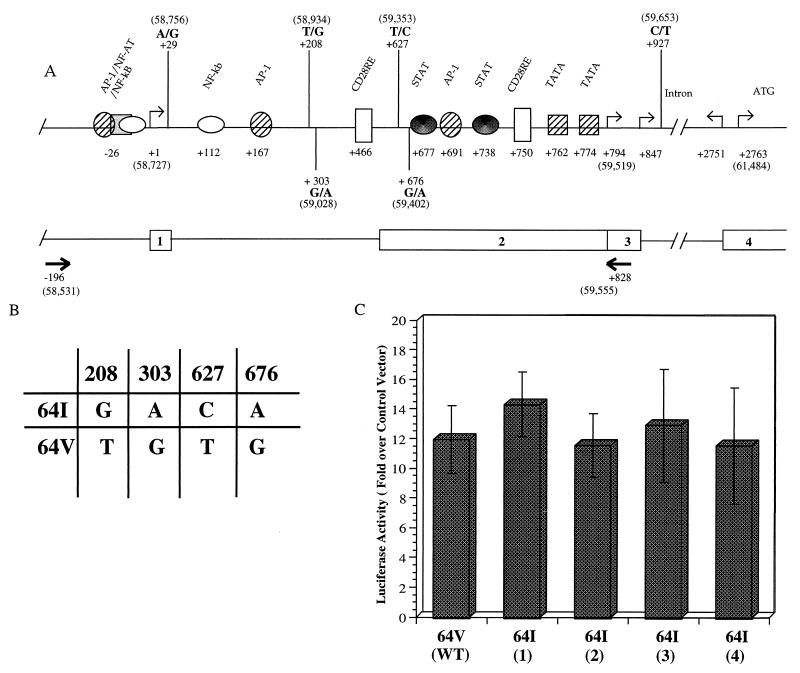FIG. 7.
Effect of CCR2-64I-associated polymorphisms on promoter activity in vitro. (A) Schematic representation of the CCR5 promoter region as reported by Liu et al. (28), with addition of the four polymorphisms frequently found in this region (36). The upstream promoter (Pu) transcription initiation site reported by Mummidi et al. (37) is defined as nt +1. Numbers in parentheses refer to nucleotide positions in GenBank accession no. U95626. Intron/exon organization and positions of the primers (arrows) used for PCR amplification of this region from genomic DNA are shown below. (B) Genotype of the CCR2-64I-associated and wild-type CCR2 64V-associated alleles tested for promoter function in panel C. (C) pGL3 reporter plasmids containing 1-kb genomic fragments derived from a CCR2 +/+ donor (wild type [WT]) or from four CCR2 64I/64I donors were tested for promoter activity in transfected Jurkat cells. Activity (mean ± standard deviation) is shown relative to pGL3 without insert, which is defined as 1, and normalized for the efficiency of transfection as measured by cotransfecting with β-galactosidase expression vector. Typical activity of vector without insert was 961 relative light units. Results shown represent averages of two independent experiments.

